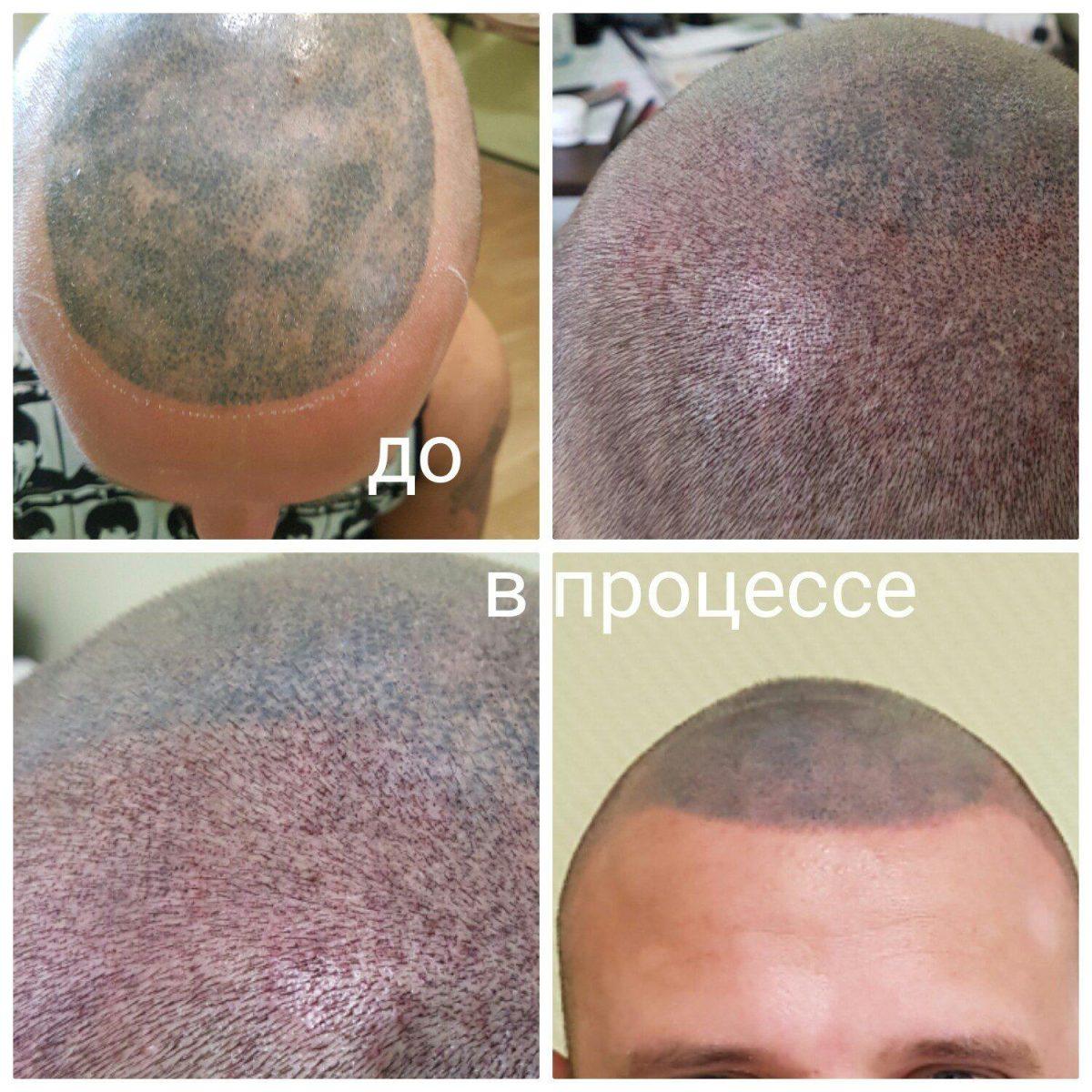
Tricopigmentation and tattooing are not the same thing.
Tricopigmentation is an innovative method of contrasting and hiding the signs of baldness. This technique is somewhat similar to tattooing in that it involves creating pinpoint deposits of pigment under the skin using a machine that sets the needles. However, there are significant differences between tattooing and tricopigmentation.
WHAT IS TRICOPIGMENTATION?
As summarized above, tricopigmentation is a technique aimed at creating micropigmented deposits under the skin that mimic the presence of hair in the growth phase. In this way, areas of the scalp, which are now devoid of hair or which are significantly thinned, can be aligned with those on which they still remain, optically recreating the effect of a shaved head. It can also hide and mask scalp scars, such as those left after hair transplantation, or provide more color coverage in cases where the hair is still widespread enough despite thinning. could be saved. long.
BECAUSE TRICOPIGMENTATION CANNOT BE CALLED TATTOO.
At first glance, tricopigmentation can be mistaken for tattooing given the actual similarities between the two methods. In particular, in both cases, the pigment is transferred under the skin using needles. However, this is where the similarities end.
Neither the tools used, nor the pigments, nor the needles are the same for tricopigmentation and tattooing. Just think about the different purposes of the two methods to understand the reasons for this difference. When tricopigmentation, it is necessary to leave only point micro-nozzles, that is, vulgar small dots. Tattoos can have different shapes and outlines. Consequently, the instruments and needles introduced will have different characteristics in order to achieve these different goals.
When choosing a hair pigmentation treatment, it is extremely important to keep this aspect in mind. Hair pigmentation is different from tattooing. A tattoo artist who is proficient with conventional sensory instruments may not necessarily be able to provide a client with a satisfactory hair pigmentation result for the simple reason that the materials available to him are not suitable for this purpose. It should not be forgotten that, in addition to the instrumentation itself, the paths of the tricopigmentist and the tattooist are different. To become one or the other, you need to take special training courses, and in no case should you improvise in a role for which the appropriate training has not been carried out.
If we then take into account the specific type of tricopigmentation, namely temporary, there is another obvious difference with tattooing. In fact, temporary tricopigmentation is specifically designed to fade over time to give the user the freedom to change their minds and change their appearance. The tattoo is known to last forever. This difference in duration between tricopigmentation and tattooing is based on two precise characteristics of these two techniques: the depth of pigment deposition and the characteristics of the pigment itself.
In fact, during the creation of a tattoo, not only is the pigment deposited deeper, but the pigment itself is made up of particles that cannot be removed by the body over time. In contrast, temporary tricopigmentation assumes that the deposition is formed in a more superficial layer and uses absorbable pigments, that is, they can be excreted from the body during phagocytosis.
Leave a Reply